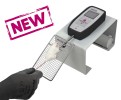Authors
Y. Senechal, P. H. Kelly, K. K. Dev.
Lab
Novartis Institutes for BioMedical Research, Neuroscience Research, Basel, Switzerland.
Journal
Behavioural Brain Research
Abstract
Amyloid precursor protein (APP) is involved in the pathogenesis of Alzheimer's disease (AD), but its role in cognition has been relatively little studied. APP knockout (KO) animals have been described previously and show deficits in grip strength, reduced locomotor activity and impaired learning and memory in a conditioned avoidance test and the Morris water-maze. In order to further investigate the in vivo function of APP and its proteolytic derivatives, we tested APP KO mice and age-matched wild type controls at two different ages, 3 and 8 months, in a range of behavioural tests measuring neuromuscular, locomotor and cognitive functions. These tests included the acquisition of a passive avoidance response as a measure of long-term memory of an aversive experience, and spontaneous alternation in a Y-maze, regarded as a measure of spatial short-term memory. The absence of APP expression in APP KO mice was confirmed at the protein level using hippocampal tissue in Western blotting. APP KO mice displayed deficits in forelimb grip strength and locomotor activity in agreement with previous studies. In the Y-maze test used for spontaneous alternation behaviour, APP KO animals did not exhibit reduced alternation rates. On the other hand, in the passive avoidance test, APP KO mice showed an age-related deficit in retention of memory for an aversive experience. The results suggest that APP and/or its proteolytic derivatives may play a role in long-term memory in adult brain and/or may be required during the development and maintenance of neuronal networks involved in this type of memory.
BIOSEB Instruments Used:
Grip strength test (BIO-GS3)

 Pain - Thermal Allodynia / Hyperalgesia
Pain - Thermal Allodynia / Hyperalgesia Pain - Spontaneous Pain - Postural Deficit
Pain - Spontaneous Pain - Postural Deficit Pain - Mechanical Allodynia / Hyperalgesia
Pain - Mechanical Allodynia / Hyperalgesia Learning/Memory - Attention - Addiction
Learning/Memory - Attention - Addiction Physiology & Respiratory Research
Physiology & Respiratory Research
 Pain
Pain Metabolism
Metabolism Motor control
Motor control Neurodegeneration
Neurodegeneration Cross-disciplinary subjects
Cross-disciplinary subjects Muscular system
Muscular system General activity
General activity Mood Disorders
Mood Disorders Other disorders
Other disorders Joints
Joints Central Nervous System (CNS)
Central Nervous System (CNS) Sensory system
Sensory system
